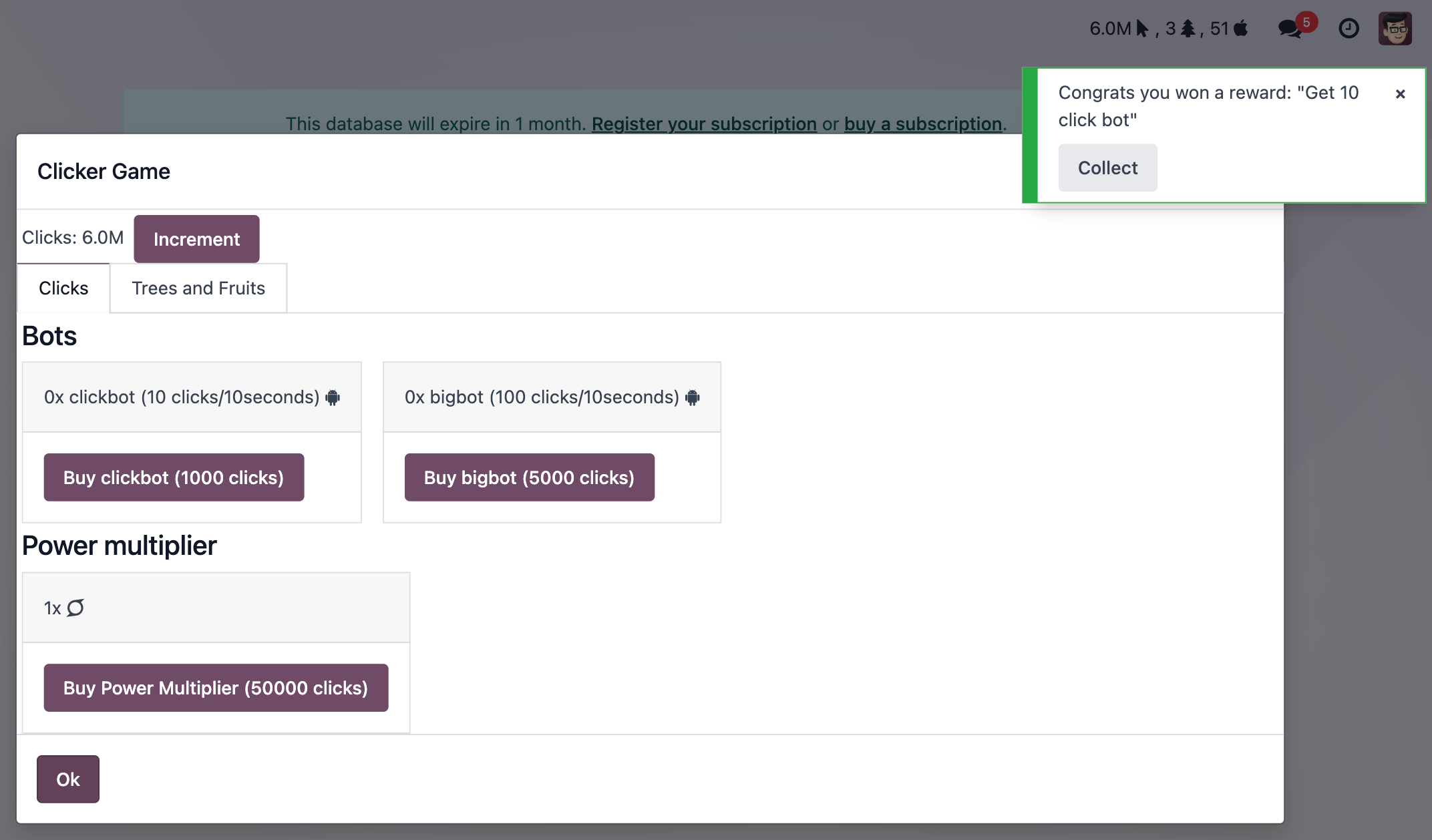Building a clicker game might seem simple at first glance, but creating one that is engaging, scalable, and integrated within a complex platform like Odoo involves a series of thoughtful steps. The process not only demonstrates fundamental programming concepts but also showcases how to leverage a web framework’s features—such as reactive state management, component composition, and event handling—to craft interactive applications. Here’s an overview of how such a project unfolds, based on comprehensive tutorials and practical examples.
Starting with the Basics: Creating a Systray Item
The journey begins by adding a visual indicator—a systray icon—that displays the current number of clicks. This involves defining a simple Owl component (Odoo’s web component framework) with a reactive value initialized to zero. Registering this component in the systray registry makes it visible in the user interface. A button is added alongside the text to increment the click count, providing immediate interactivity.
Enhancing Interaction: Counting External Clicks
To make the game more dynamic, the system can listen to all clicks within the web client. Using an event listener that captures click events on the entire document body, every user click can increment the counter, encouraging continuous engagement. Care is taken to ensure the listener captures events at the right phase to avoid missing any clicks, and to prevent the counter from increasing more than intended when clicking on the counter itself.
Expanding the UI: Client Actions and Main Interface
While the systray provides quick insights, a more spacious interface is needed for gameplay. Creating a client action—an independent, main view managed by the web client—serves this purpose. This component displays the current game state and includes a button to open the game in a popover modal, using the action registry and the doAction service with a target set to “new” for a non-intrusive window.
Managing State Effectively: Moving to a Service
Initially, game state variables like the click count are stored locally within components. To enable multiple components to share and update this state consistently, the logic is refactored into a dedicated service. This reactive service maintains the click count and provides functions to modify it, which are then used across both systray and main interface components. This separation of concerns simplifies maintenance and enhances scalability.
Improving Code Reuse: Implementing Custom Hooks
Repeatedly importing and using the service and state management functions can clutter the code. To streamline this, a custom hook—such as useClicker—is introduced. This hook encapsulates the logic for accessing the shared state and functions, making components cleaner and more readable. This approach promotes reusability and aligns with modern web development best practices.
Humanizing Large Numbers: Formatting the Display
As the game progresses, the click count can become quite large. To improve readability, a humanization function formats numbers into shorter representations (e.g., 1.2k instead of 1200). A dedicated component, ClickValue, wraps the displayed value and uses this formatting, enhancing user experience by making large numbers easier to interpret.
Adding Tooltips for Precision
While humanized numbers are user-friendly, they sacrifice some precision. To balance clarity and detail, the ClickValue component is modified to include a tooltip that shows the exact number on hover. Wrapping the number in a <span/> element with a dynamic tooltip attribute ensures users can see precise values when needed.
Introducing Game Mechanics: Buying ClickBots
A key feature of clicker games is automation. Once the player reaches a milestone—say, 1,000 clicks—they unlock a new resource: clickbots. These bots generate additional clicks periodically. The game state is augmented with level and clickBots properties. A button allows players to purchase bots if they have enough clicks, and a timer periodically increments the total clicks based on the number of bots and a multiplier, simulating automated income.
Refactoring with Object-Oriented Principles
Initially, the game logic might be implemented functionally, with state and update functions scattered across components. As complexity grows, refactoring into a class-based model enhances organization. A ClickerModel class encapsulates all properties and methods related to game logic. Extending a reactive wrapper from the framework makes instances of this class reactive, simplifying updates and interactions.
Reacting to Milestones: Event Bus Communication
Feedback is crucial to keep players engaged. When milestones like 1,000 clicks are reached, the game emits events via an event bus system. Components listening for these events can trigger visual effects—such as a rainbow animation—or display notifications. This decoupled communication pattern is vital for maintaining clean architecture and responsive UI updates.
Scaling Up: Adding BigBots and Resources
To diversify gameplay, new types of clickbots—such as BigBots—are introduced. These offer higher click generation rates but require larger investments (e.g., 5,000 clicks). The state tracks their count, and UI components display their info and allow purchases, provided the player has sufficient clicks. The interface uses conditional rendering and expressions with Owl’s template syntax to handle resource availability.
Introducing Multipliers: Power Resources
Further scaling is achieved by adding a power resource—a multiplier that enhances the effectiveness of clickbots. When unlocked at higher levels, this resource multiplies click generation, making automation more powerful. Users can purchase power upgrades with accumulated clicks, and the game UI reflects these changes dynamically.
Rewards and Incentives: Random Bonuses
To motivate continued play, the game includes a system of random rewards. Rewards are objects with descriptions and apply functions, triggered when certain levels are reached or during specific actions. For example, a reward might grant an extra click or increase bot power. The system randomly selects applicable rewards based on the current game state, adding an element of surprise.
Rewards on Form Views and Command Palette
Special rewards can also be granted when players open certain forms—like a purchase or upgrade window—via patching the form controller. Additionally, commands such as “Open Clicker Game” or “Buy ClickBot” are registered in the command palette, allowing quick access to various functions, enhancing user flow and accessibility.
Adding New Resources: Trees and Fruits
Expanding the game world, resources like trees are introduced. Trees cost a substantial number of clicks to plant but provide fruits (e.g., pears, cherries), which accumulate over time. The game state tracks the number and types of trees and fruits; the UI displays these, and periodic timers increment fruit counts based on the planted trees. Unlock levels control access to different tree types, adding depth and strategic choices.
UI Enhancements: Dropdown Menus and Notebook Components
To manage increasing complexity, the interface incorporates dropdown menus within the systray to show detailed stats—like total clicks, trees, and fruits—as well as quick commands. Organizing content into tabs using Owl’s Notebook component improves navigation, allowing players to switch between game progress, resource management, and settings seamlessly.
Persisting State and Managing Updates
Game progress is saved using local storage, ensuring that data persists across sessions. The state is serialized periodically and loaded upon startup. To accommodate future updates, a versioning system tracks schema changes. When the code updates and the stored state is outdated, migration functions automatically update the state structure, preventing data corruption and ensuring backward compatibility.
Adding New Features: Peaches and More
As a final step, new resource types like peaches are added, further enriching gameplay. These additions involve updating the state, unlocking levels, and defining specific behaviors. Each new resource is integrated into the UI and game logic, demonstrating the extensibility of the underlying architecture.
This comprehensive process illustrates how to develop an interactive, scalable clicker game within a complex web platform like Odoo. It combines reactive programming, component-based UI design, event-driven communication, and persistent storage—fundamental concepts that are broadly applicable to modern web application development.


